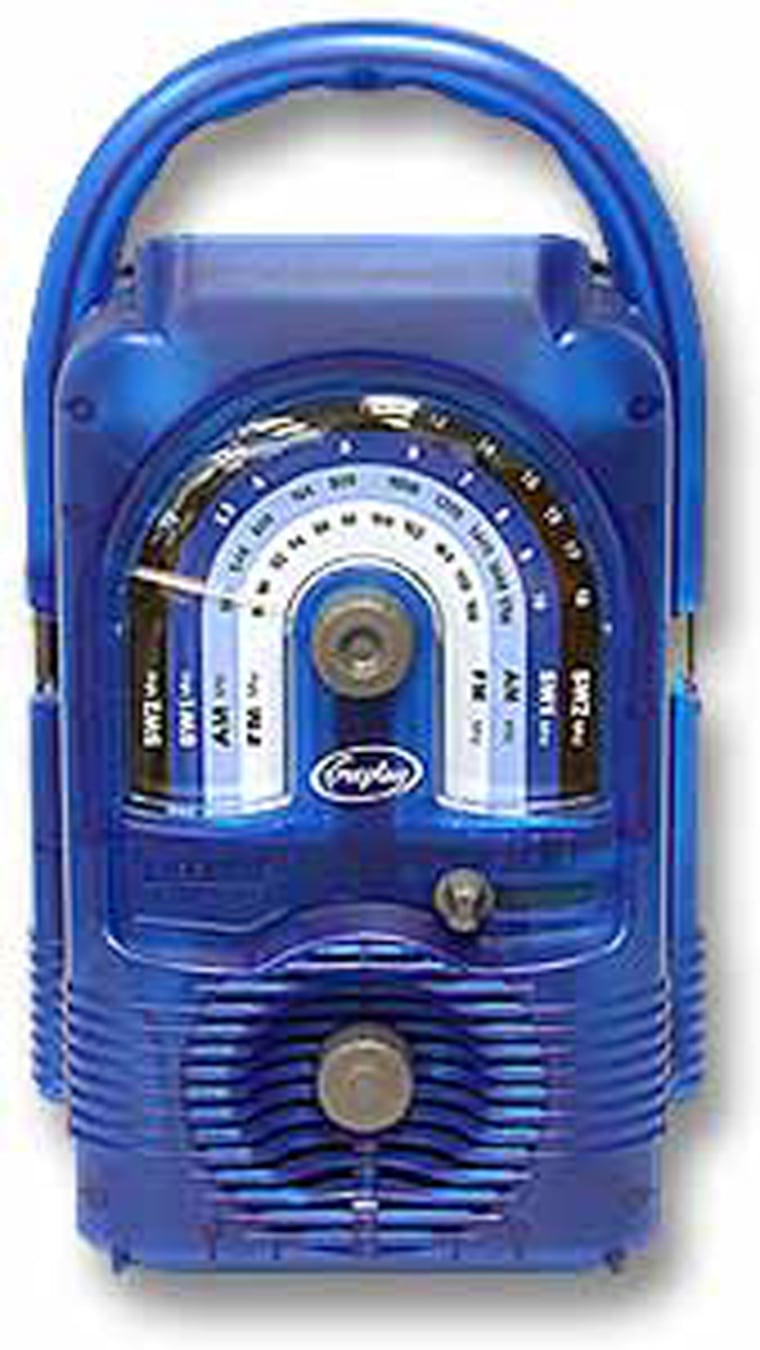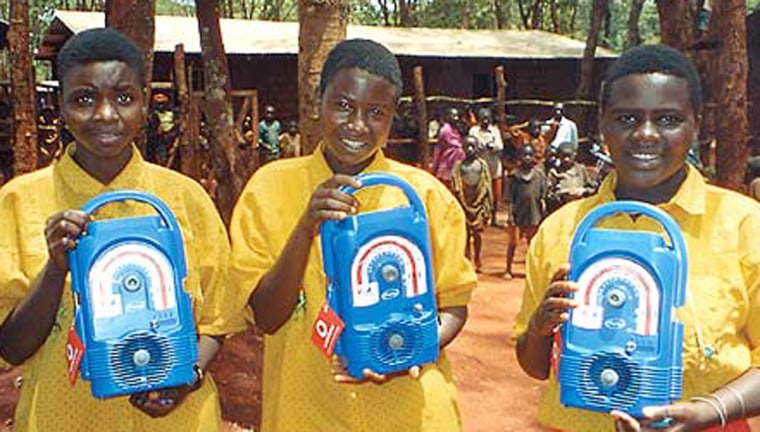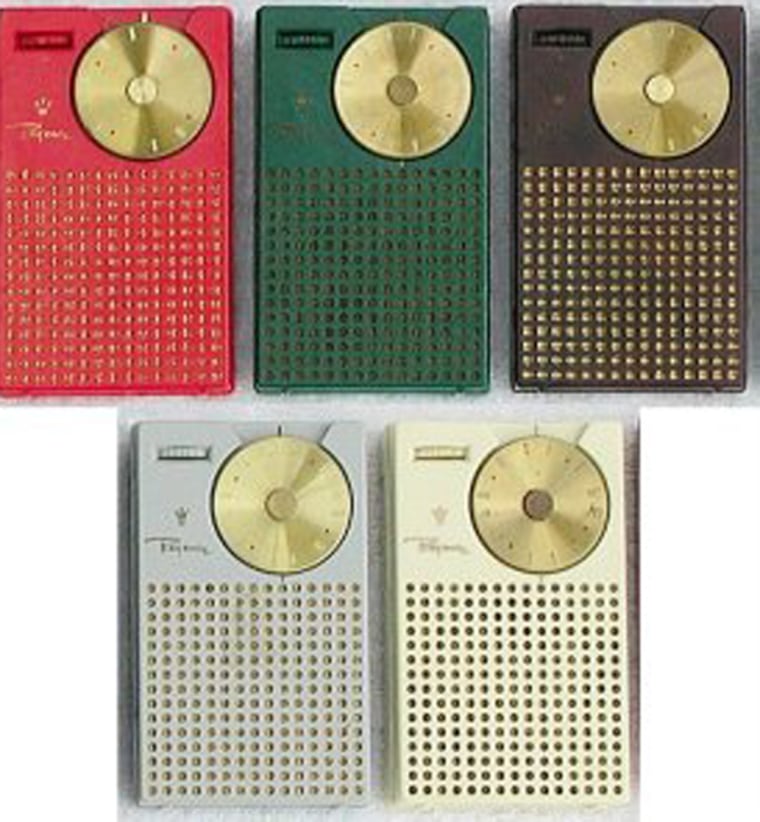Happy 50th birthday to the transistor radio. For the last half-century we’ve embraced transistor radios, loved them, made them part of our lives and even took them for granted. But back in 1954, the Regency TR-1 portable radio was very special. It was a technological and engineering masterpiece. Fast-forward to 2004 where the modern-day Freeplay Lifeline transistor radio is also an amazing invention – but for entirely different reasons.
It was on June 18, 1954 that a small U.S. company which manufactured signal boosters announced they had come up with a way to make radios portable. Before that date radios ran on tubes, which needed AC power or 120 volts worth of batteries. Tube radios were just way too big and heavy to fit in your pocket.
But the people at Regency based their radio on a product from a company called Texas Instruments — the transistor. The transistor had been invented a few years earlier at Bell Telephone Labs — but had seen limited use. Bell had even experimented with making a transistor radio. But it was Regency who began mass-producing radios using four transistors — powered by a standard 22-volt hearing aid battery — in bright, colorful plastic cases.
Legend has it that the boss at IBM was so enamored by the unbelievable idea of the world’s first pocket radio that he bought a bunch of them for other movers and shakers at his company. He wanted them to be able to be informed and get breaking news before anyone else.
The transistors cost $2.50 each back then — that’s like $17 for each one in 2004 dollars. The TR-1 sold for $49.95 in 1954 — which would be $350 today. First adopters always pay for the right to own the latest and greatest. Amazingly, Regency sold something like 100,000 of them in the first year.
Today, original TR-1s sell for hundreds of dollars at auction — if you can find one. Even later 1950s models sell for a lot. But if you have one, or are lucky enough to find one, you can still purchase a 22-volt battery to power it at the nearest Radio Shack store.
For transistor radios the rest is history. Japanese companies started to mass produce them — prices went down and the radios got smaller, better, more efficient. Today, nearly everyone owns one. The only problem in 2004 is that there’s usually very little to listen to on AM or FM radio in the U.S. — but that’s another story which I’ll save for another time.
A true Lifeline

In other parts of the world the situation is reversed. There’s plenty to listen to but people can’t afford transistor radios — or if they can they can’t afford to run them. In many places on this planet, where a transistor radio would provide entertainment for a number of families or a village, there’s little money to buy one and no electricity. Batteries are usually out of the question too. Forget about HDTVs, DVDs and high-speed Internet lines.
We’ve told you about Freeplay in the past. They make radios which run on wind-up and/or solar power. Their factories are in developing nations as well. They’ve also have a foundation whose sole mission is to enable the delivery of radio information and education to the most vulnerable populations of the world via self-powered radios.
Working mostly in Africa the Freeplay Foundation collaborates with professionals in education, health, agriculture, peacemaking, and voter education — all sectors where radio can play a vital or even life-saving role.
The radio of choice for this task is the Freeplay Lifeline. It’s large (7.5 by 13 by 5.25 inches), heavy (4 pounds) and bright blue. It’s powered by a crank on the back (60 turns give you about 30 minutes of listening) or by a detachable solar panel (there’s a cordless phone battery inside which stores electricity for when it’s dark outside).
The cathedral-shaped, AM/FM/short-wave radio has its serial number emblazoned on the tuning dial for everyone to see. That serial number is nearly impossible to remove without breaking the front of the radio. That makes the Lifeline harder to steal. Operation is simple and sound quality is pretty good.
Usually, Lifelines aren’t sold to the public. But, for the first time, the good people at C Crane are making them available to the public under a wonderful arrangement with the Freeplay Foundation: Buy one – give one free. For $99.95 you get one of these great radios and C Crane donates one to the Foundation so they can help orphaned children in Africa.

Many of the children who receive the Lifeline radios are heads of their households, and are responsible for the well being of their younger siblings and relatives. There are approximately 400,000 children in Rwanda that live in households affected by the legacy of their country’s genocide of 1994, and the increasing impact of HIV/AIDS.
So far, C Crane has donated more than 1,100 to the Freeplay Foundation. It would be great to help make those numbers climb. Not only are you doing some to help but you’re helping further technology around the world and you also get a wonderful holiday gift for yourself, or someone you love, in the bargain.
Just as the Regency TR-1 was a big technological breakthrough 50 years ago, the Lifeline can have just as big an impact for the millions who are starved for information, knowledge, education and entertainment.
